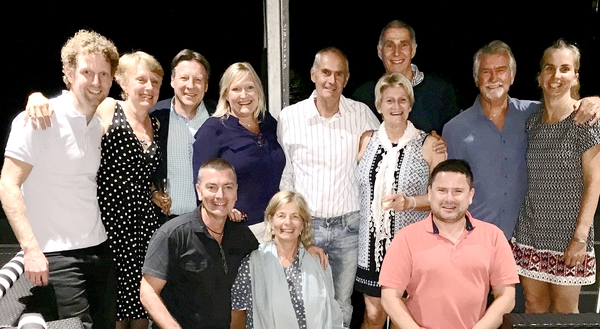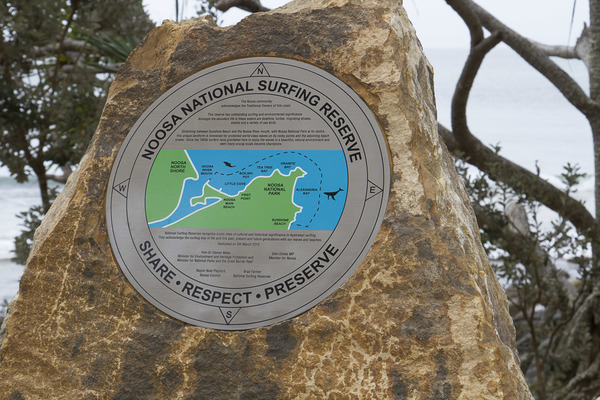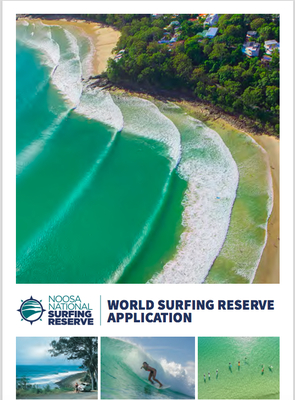By Phil Jarratt
There are currently nine World Surfing Reserves spread across four continents – three in North America, three in South America, one in Europe and two in Australia – so designated by the 19-member Vision Council of World Surfing Reserves, Inc, part of the global Save The Waves Coalition.
By the time you read this, a decision will have been made by the Vision Council as to whether Noosa will become the tenth World Surfing Reserve, joining Manly Beach in Sydney (largely for heritage reasons) and the southern Gold Coast as Australia’s third.
If the vote goes our way, this will not only be a hugely prestigious feather in the cap of the Noosa National Surfing Reserve – dedicated in 2015 – but it will give our surfing community a seat at the table wherever issues vital to the preservation and maintenance of our pristine surf and beach assets are discussed.
It would also give surf-related tourism a tremendous shot in the arm, which some might see as a double-edged sword (to mix a salty metaphor or three), but that horse has well and truly bolted.
So what exactly is a World Surfing Reserve? The mission statement of WSR is to proactively identify, designate and preserve outstanding waves, surf zones and surrounding environments around the world. The Save The Waves Coalition, along with key partners like National Surfing Reserves (NSR) Australia and the International Surfing Association (ISA), launched the World Surfing Reserves concept in 2009, and it now serves as a global model for preserving wave breaks and their surrounding areas by recognising and protecting the key environmental, cultural, economic and community attributes of surfing areas.
Since 2009, WSR has used its muscle to save iconic surf breaks from potentially destructive development (Punta De Lobos in Chile and Todos Santos in Mexico) and to lobby for better environmental protection (Malibu in California and Ericeira in Portugal).
The case Noosa presented was as an exemplar of best practice. Since Dr Arthur Harrold and Max Walker went to bat to protect our headland from development back in 1962, generations of civic-minded citizens have created layers of protection that all but guarantee Noosa’s position as the gem of the Australian coastline.
If Noosa’s submission to WSR is successful, to that we will add a layer of protection to our often-overlooked surf break assets.
There is another aspect to this.
I count myself lucky to have surfed five of the nine existing World Surfing Reserves, and the other four are on my bucket list. I am not alone in this. In fact there is a small army of grey surf nomads doing the same thing.
This week’s decision will mark a major milestone for the hardworking committee that came together in December 2013 at the instigation of Matt Horder from the Sunshine Coast Sports Federation, who felt it was high time Noosa became a National Surfing Reserve.
With the help of important stakeholders like Noosa Council and Tourism Noosa, we put together a committee representing all beach user groups.
I was elected chair, with Drew Pearson (Halse Lodge) treasurer and Juanita Bloomfield from Tourism Noosa secretary. Joining us were Omar Bakhach (Parks and Wildlife), Chris Doney (Noosa Heads Surf Club), Libby Winter (Noosa Parks Association), Di Cuddihy (Noosa Malibu Club), and Cr Tony Wellington and Alison Hamblin from Noosa Council.
After the long process of securing broad community support and funding partners, and of preparing a detailed submission that included a book and short film (thanks Panga Productions), Noosa was dedicated as a National Surfing Reserve – covering five point breaks and numerous beach breaks between North Sunshine and the river mouth – in March 2015.
Not content to rest on our laurels, we then moved straight into a campaign to become a World Surfing Reserve, hosting members of the Vision Council so that they could draw their own conclusions about our surfing community, and preparing a far more detailed submission.
Through this whole process, there have only been two changes to our committee. Dan Bedford from Social Tap joined us to enhance our social media profile, and when pressures of work overtook Mayor-elect Tony Wellington, he was replaced by Cr Jess Glasgow, also a keen surfer. Tony has remained our greatest supporter.
So right about now, I know there are about a dozen of us with fingers, toes and everything else crossed, and I suspect a lot of our supporters are doing the same.










